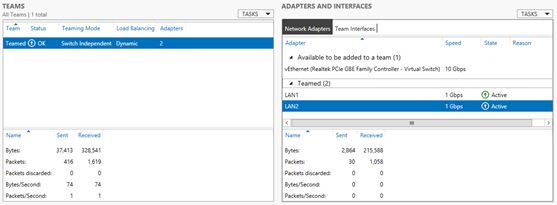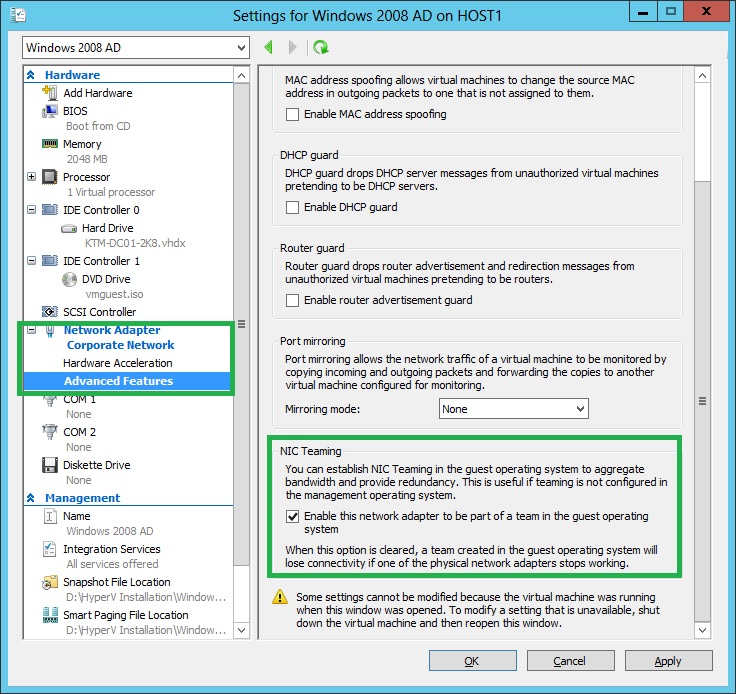NIC Teaming
NIC teaming allows you to bond multiple NICs into a single interface. Benefits include Fault Tolerance and Load Balancing. In this example I will create a Teamed interface of two NICs.
The first PowerShell command you should run is Get-NetAdapter. The output will show you your NICs including their status (up/down). In the below screenshot the NICs that will form my new Teamed interface are Ethernet 3 and 4.

Next run the rename-netadapter cmdlet to rename the adapters to LAN1 and LAN2 (optional).

Now create the Teamed interface composed of LAN1 and LAN2. There are other teaming modes such as static (802.3ad) and dynamic (LACP).
New-NetLbfoTeam -Name "Teamed" -TeamMembers LAN1,LAN2 –TeamingMode SwitchIndependent
You can view the status of the new teamed interface by running:
Get-NetLbfoReam
You can also launch a GUI lbfo console that displays connectivity information by running lbfoadmin

An IP address and default gateway can now be assigned to the teamed interface using the new-netipaddress cmdlet:

Next set the Teamed interface's DNS server addresses using the set-dnsclientserveraddress cmdlet:
Set-DnsClientServerAddress -InterfaceAlias “Teamed” -ServerAddresses 8.8.8.8, 8.8.4.4
If you find that you need to change the IP address you can use the set-netipaddress cmdlet. Note the ifindex is obtained from get-netadapter:
Set-NetIPAddress –InterfaceIndex 12 –IPAddress 192.168.1.100
Finally I turned off my old interface named Ethernet using disable-netadapter -Name ethernet. The status for the interface will now change to Disconnected in the get-netadapter output.
The Teamed interface is now operational, however you need to follow the below steps if you want to use it in a Hyper-V environment for guest VMs.
In Hyper-V create a new external virtual switch using the Microsoft Network Adapter Multiplexor Driver.

In your guest VM's settings under Network Adapter select the new virtual switch you just created.

Under advanced features check the NIC teaming checkbox.

You can verify connectivity by sending a continuous ping to the new teamed interface and then removing one of the network cables. You should still be able to ping the interface with only one connected network cable.